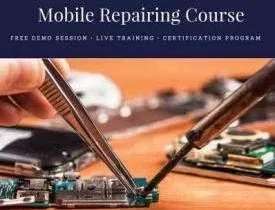Description
Course Name: Diploma in Computer Networking
Course Id: DCN/Q1001.
Education Qualification: 10th Pass.
Duration: 370 Hrs.
How You will Get Diploma Certificate:
Step 1- Select your Course for Certification.
Step 2- Click on Enroll Now.
Step 3- Proceed to Enroll Now.
Step 4- Fill Your Billing Details and Proceed to Pay.
Step 5- You Will be Redirected to Payment Gateway, Pay Course and Exam Fee by Following Options.
Card(Debit/Credit), Wallet, Paytm, Net banking, UPI and Google pay.
Step 6- After Payment You will receive Study Material on your email id.
Step 7- After Completion of Course Study give Online Examination.
Step 8- After Online Examination you will get Diploma Certificate soft copy(Scan Copy) and Hard Copy(Original With Seal and Sign).
Step 9- After Certification you will receive Prospect Job Opportunities as per your Interest Area.
Online Examination Detail:
- Duration- 120 minutes.
- No. of Questions- 60. (Multiple Choice Questions).
- 10 Questions from each module, each carry 10 marks.
- Maximum Marks- 600, Passing Marks- 40%.
- There is no negative marking in this module.
| How Students will be Graded: | ||
| S.No. | Marks | Grade |
| 1 | 91-100 | O (Outstanding) |
| 2 | 81-90 | A (Excellent) |
| 3 | 71-80 | A (Very Good) |
| 4 | 61-70 | B (Good) |
| 5 | 51-60 | C (Average) |
| 6 | 41-50 | P (Pass) |
| 7 | 0-40 | F (Fail) |
Benefits of Certification:
- Government Authorized Assessment Agency Certification.
- Certificate Valid for Lifetime.
- Lifetime Verification of Certificate.
- Free Job Assistance as per your Interest Area.
Syllabus
Diploma in Computer Networking
Introduction to Networking
Social network, Mobile network, Network of computers, Airlines, railway, banks, hospitals networks, evolution of network, types of network, Personal Area Network (PAN), Local Area Network (LAN), Metropolitan Area Network (MAN), Wide Area Network (WAN), Modem, Ethernet Card, Repeater, Router, networking topologies, mesh topology, ring topology, bus topology, tree or hybrid topology, identifying nodes in a networked communication, Mac address, internet, web and the internet of things, the world wide web, domain name system, DNS Server.
Network Essentials & Management
Communications in a Connected World, Network Types, Data Transmission, Bandwidth and Throughput, Clients and Servers, Network Components, Online Connections, Wireless Networks, Local Network Connections, Network Documentation, Explore Networks with Packet Tracer, Explore Networks with Packet Tracer, Packet Tracer Network Simulator, Packet Tracer Installation, The Packet Tracer User Interface, Packet Tracer Network Configuration, Build A Simple Network, Build A Simple Network, Network Media Types, Ethernet Cabling, Coaxial and Fiber-Optic Cabling, Twisted Pair Operation.
Types of Networks
Introduction: Network, Uses of Networks, Types of Networks, reference Models: TCP/IP Model, The OSI Model, Comparison of the OSI and TCP/IP reference model. Architecture of Internet, Physical Layer: Guided transmission media, Wireless transmission media, Switching, Data Link Layer – Design issues, Error Detection & Correction, Elementary Data Link Layer Protocols, Sliding window protocols, Multiple Access Protocols – ALOHA, CSMA,CSMA/CD, CSMA/CA, Collision free protocols, Ethernet- Physical Layer, Ethernet Mac Sub layer, Data link layer switching: Use of bridges, learning bridges, spanning tree bridges, repeaters, hubs, bridges, switches, routers and gateways.
Networking Topologies
Introduction to data communication and networking, Study of OSI and TCP/IP protocol suit, Study of Analog and Digital signals, Study of Digital transmission, Study of Analog transmission, Study of Multiplexing, Types of transmission media, Error Detection and Correction, Study of DTE-DCE in brief, Introduction to networks and devices, Introduction to data communication and networking: Why study data communication? Data Communication, Networks, Protocols and Standards, Standards Organizations. Line Configuration, Topology, Transmission Modes, Categories of Networks Internet works.
Object Oriented Programming with java
Introduction to Java, Objects and Classes, Inheritance and Polymorphism, Event and GUI programming, I/O programming, Multithreading in java, Basics of Java programming, Data types, Variables, Operators, Control structures including selection, Looping, Java methods, Overloading, Math class, Arrays in java, Basics of objects and classes in java, Constructors, Finalize, Visibility modifiers, Methods and objects, Inbuilt classes like String, Character, String Buffer, File, this reference, Inheritance in java, Super and sub class, Overriding, Object class, Polymorphism, Dynamic binding, Generic programming.
Data Structure Using Python
Types of variables, types of methods, Inheritance: single, multiple, multi-level, hierarchical, hybrid, Polymorphism: with functions and objects, with class methods, with inheritance, Data Structures – Definition, Linear Data Structures, Non-Linear Data Structures, List, Tupelos, Set, Dictionaries, Comprehensions and its Types, Strings, slicing, Overview, Types of Arrays, Operations on Arrays, Arrays vs. List. Bubble Sort, Selection Sort, Insertion Sort, Merge Sort, Quick Sort, Introduction, Directed vs Undirected Graphs, Weighted vs Unweighted Graphs, Overview of Trees, Tree Terminology, Binary Trees.







